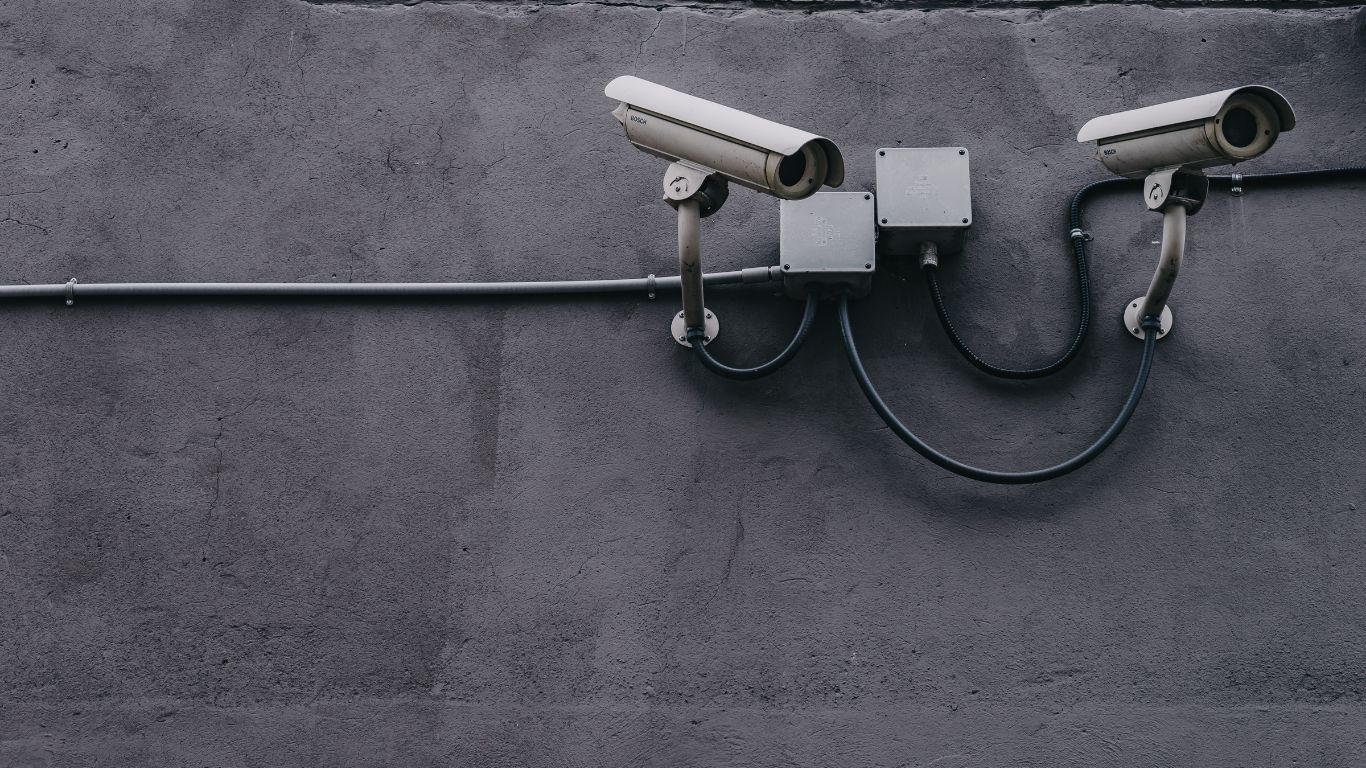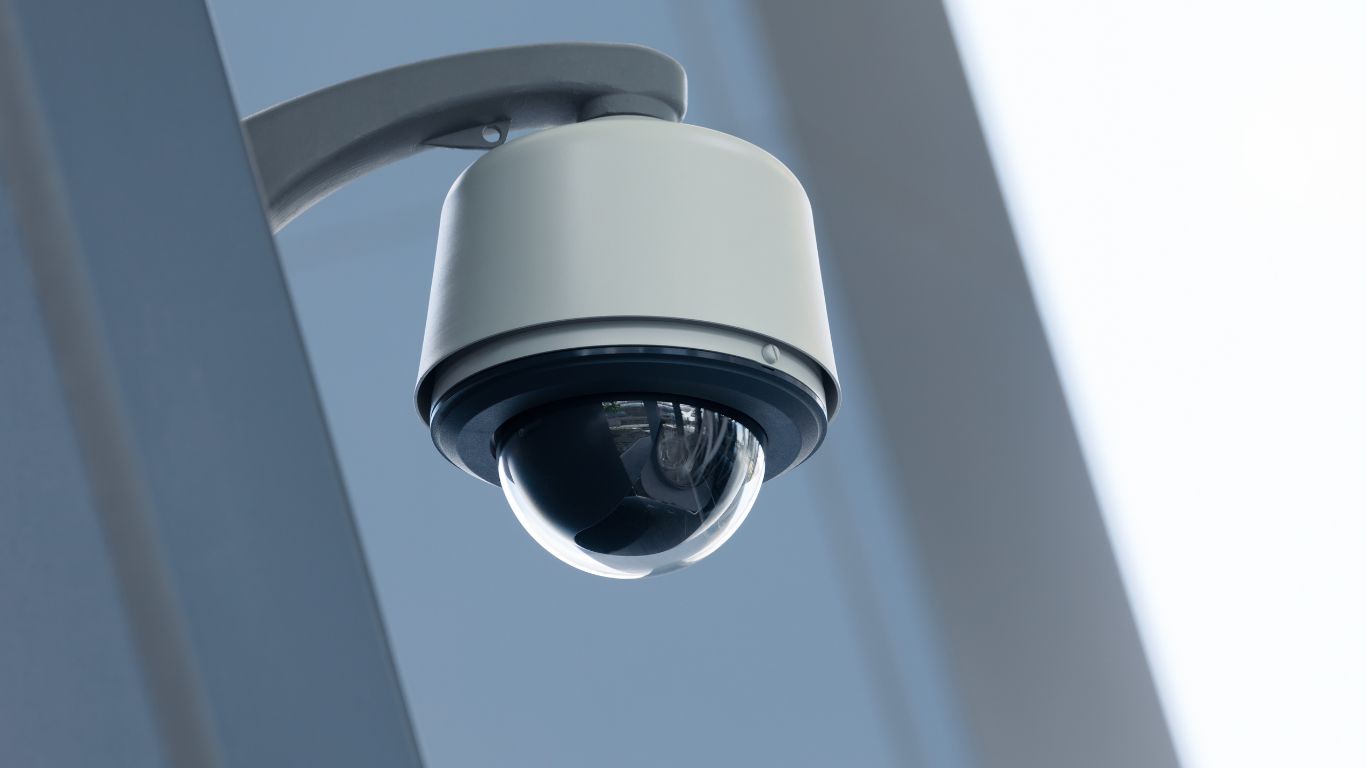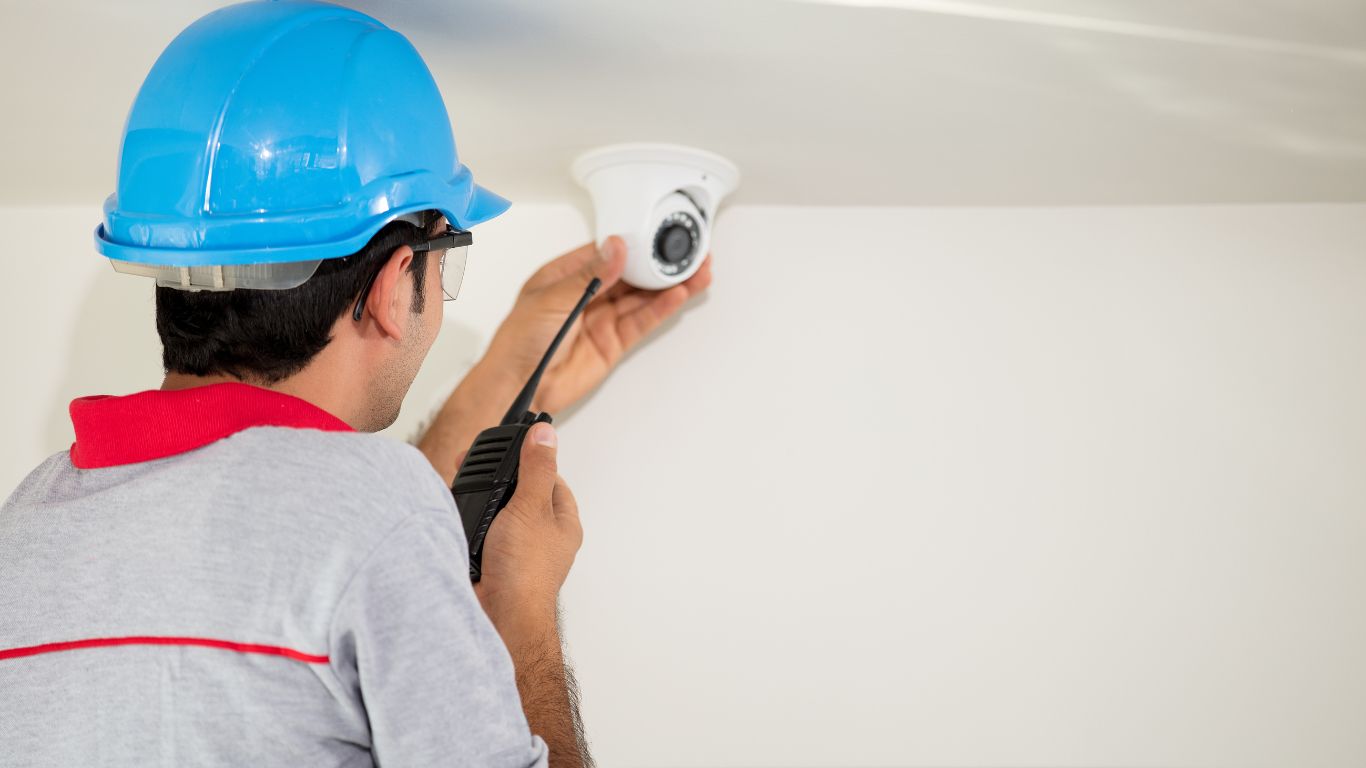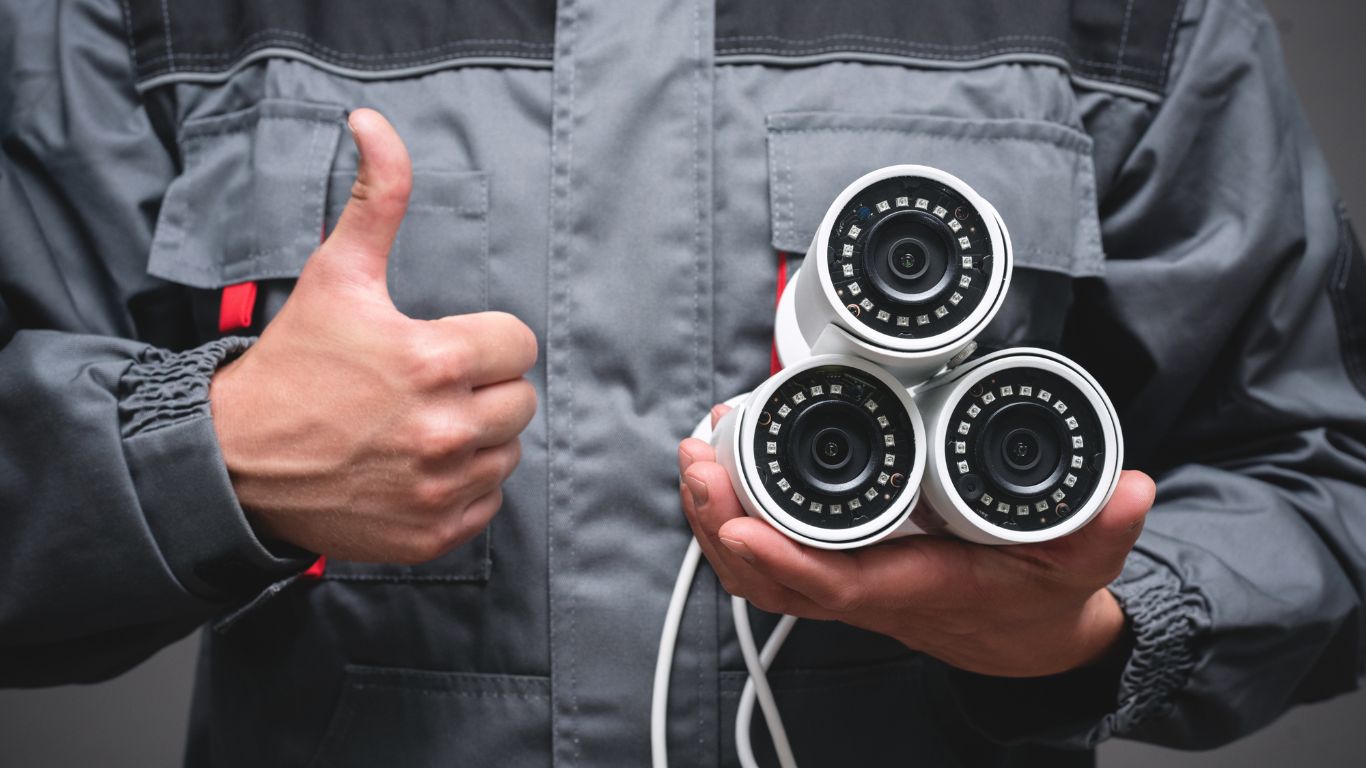Outdoor Surveillance: A Comprehensive Guide To Installing Cameras

If you’re looking to improve the security of your home, one of the best strategies is to set up outdoor surveillance cameras. With their help, you can easily keep an eye on any suspicious activity around your property and protect yourself from crime. But what types of outdoor surveillance cameras do you need? What are the installation steps involved? How can they be used effectively? In this comprehensive guide, we'll look at everything related to setting up outdoor security systems – from choosing the right type of camera for your needs to understanding how each system works. Read on for some invaluable insights regarding security measures that will give you extra peace of mind!
Types of Outdoor Security Cameras
There are many types of outdoor security cameras available, each with its unique features and advantages. By understanding the different options available, you can make an informed decision about which type of camera is best for your needs.
Bullet cameras

These cameras are named for their cylindrical shape and are one of the most popular types of outdoor security cameras. They are easy to install and can be mounted on walls or ceilings. They typically have a wide field of view and are ideal for monitoring large areas such as driveways or yards.
Dome cameras

These cameras are named for their dome-shaped housing and are also a popular choice for outdoor security. They are typically more discreet than bullet cameras and can be mounted on walls or ceilings. Dome cameras often have a wider field of view than bullet cameras and are ideal for monitoring large areas such as parking lots.
PTZ cameras
PTZ stands for Pan, Tilt, Zoom, and these cameras offer the ability to remotely control the camera's position and zoom level. This allows you to focus on specific areas and capture detailed footage. PTZ cameras are often more expensive than other types, but they are ideal for monitoring large areas and tracking moving objects.
Infrared cameras
These cameras are equipped with infrared technology that allows them to capture footage in low-light conditions. They are ideal for monitoring areas at night or in poorly lit areas. They typically have a lower resolution than other types of cameras and are more expensive.
Wireless cameras
These cameras are designed to be easy to install and do not require a wired connection to a recording device. They often use Wi-Fi to transmit footage to a remote location. Wireless cameras are ideal for properties where running cables is difficult or impossible.
4K cameras
These cameras have an ultra-high resolution which is 4 times higher than 1080p, which means the images captured are much clearer and more detailed. These cameras are ideal for places where high-resolution footage is needed for detailed analysis or identification.
Factors to Consider When Choosing an Outdoor Security Camera System
When choosing an outdoor security camera, it's important to consider the features that will best suit your needs. Consider the size of the area you want to monitor, the level of detail you need, and whether you need night vision capabilities. Also, consider the type of mounting you prefer, whether it be a wall, ceiling, or even pole mount. Here are some important factors to consider when choosing an outdoor security camera system:
Resolution
The resolution of a security camera refers to the number of pixels captured in an image. The higher the resolution, the clearer and more detailed the image will be. High-resolution cameras are ideal for identifying individuals or reading license plates.
Field of view
The field of view refers to the angle at which a camera can capture footage. Wide-angle lenses are best for monitoring large areas, while narrower angles are better for capturing detailed images of specific areas.
Night vision
If you need to monitor your property at night, look for cameras with infrared capabilities. These cameras can capture footage in low-light conditions.
Wireless vs. wired
Wireless cameras are more convenient to install, but wired cameras may provide a more secure connection. Consider the layout of your property and the ease of running wires when making your decision.
Storage
Consider how you want to store the footage captured by your cameras. Some systems come with built-in storage, while others require an external hard drive or cloud storage.
Remote viewing
Many security camera systems come with a mobile app that allows you to view footage remotely. This can be a useful feature if you want to monitor your property while you're away.
Cost
Security camera systems can vary widely in price. Consider your budget and the features that are most important to you when making your decision.
Legal considerations
Some states and municipalities have laws regarding the installation and use of surveillance cameras. Be sure to research these laws and consider any potential legal implications before installing a camera system.
Privacy
Consider the privacy of others when installing surveillance cameras. Be sure to inform your neighbors and other people near your property about the cameras and respect their privacy by not pointing the cameras toward their property.
Scalability
Consider whether the system can be expanded in the future. This can be important if you plan to add more cameras or upgrade to a more advanced system in the future.
How to Install an Outdoor Security Camera System

The installation process of an outdoor security camera can be complex and time-consuming, especially for those who are not familiar with the process. Here is a step-by-step guide on how to install an outdoor security camera system.
Step 1: Choose the right location for your cameras
The first step in installing an outdoor security camera system is to choose the right location for your cameras. Consider the areas of your property that you want to monitor and choose locations that will provide the best coverage. The camera should be placed in a location that is visible and easily accessible for maintenance.
Step 2: Gather necessary tools and equipment
Before you begin the installation process, gather all the necessary tools and equipment. This may include a drill, screws, anchors, a ladder, and any other tools specific to your camera system.
Step 3: Mount the cameras
Once you've chosen the right location for your cameras, you can begin the process of mounting them. The mounting method will vary depending on the type of camera and the surface it will be mounted on. Make sure to follow the manufacturer's instructions when mounting the cameras.
Step 4: Connect the cameras to a power source
After the cameras are mounted, you'll need to connect them to a power source. If your cameras are wired, you'll need to run power cables from the cameras to a power outlet. If your cameras are wireless, make sure they are charged or have fresh batteries.
Step 5: Configure the cameras
Once the cameras are connected to a power source, you'll need to configure them. This may include setting up the wireless connection, adjusting the camera settings, and connecting the cameras to a recording device or monitoring system.
Step 6: Test the cameras
Before you consider the installation complete, test the cameras to make sure they are working properly. This may include adjusting the angle of the cameras, checking the video quality, and making sure the cameras are properly connected to the recording device or monitoring system.
Step 7: Maintenance
Regular maintenance is important for the longevity of your camera system. Make sure to check the cameras regularly for any damage and keep the lenses clean for optimal performance.
Tips for Optimizing Your Outdoor Security Camera's Performance

The most advanced outdoor cameras can have performance issues if they are not properly set up and maintained. Here are some tips for optimizing the performance of your outdoor security cameras.
Positioning
Proper positioning of your cameras is key to getting the best performance. Make sure the cameras are pointed toward the areas you want to monitor and that the cameras have a clear line of sight. Avoid placing cameras in areas where they may be obstructed by trees or other objects.
Lighting
Adequate lighting is essential for capturing clear footage. If the area you want to monitor is not well-lit, consider installing additional lighting or selecting cameras with night vision capabilities.
Cleaning
Keeping your cameras clean is important for optimal performance. Dust and debris can accumulate on the lens, causing the image to be blurry. Regularly clean the lenses with a soft, dry cloth.
Updating software
Regularly updating the software on your cameras can help ensure they are running at their best. Software updates often include new features and bug fixes and can improve the overall performance of your camera system.
Network connectivity
If your cameras are connected to a network, make sure the connection is strong and stable. A weak or unstable connection can cause problems with the video feed and recording.
Power supply
Make sure the cameras are connected to a reliable power source. If your cameras are battery-powered, make sure the batteries are fresh and that the cameras are not consuming too much power.
Proper storage
Storing the footage captured by your cameras is crucial for security purposes. Make sure the footage is stored in a secure location and that it can be easily accessed if needed.
Professional installation
If you're not comfortable installing the cameras yourself, it's always a good idea to seek the help of a professional. They can ensure that the cameras are installed correctly and that the system is set up for optimal performance.
Common Problems with Outdoor Security Cameras and How to Fix them
Here are some common problems with outdoor security cameras and provide solutions for fixing them.
Blurred or distorted images
If the images captured by your cameras are blurry or distorted, it may be caused by a dirty lens. Clean the lens with a soft, dry cloth to remove any dust or debris. Additionally, check that the camera is positioned correctly and that it has a clear line of sight.
No power or low battery
If your cameras are battery-powered and they are not turning on, it could be due to a low battery or a dead battery. Replace the batteries or charge the cameras if necessary. If your cameras are wired, make sure they are properly connected to a power source and that the outlet is functioning correctly.
Connectivity issues
If your cameras are connected to a network, connectivity issues can cause problems with the video feed and recording. Check the strength and stability of the connection and make sure the cameras are properly configured for your network.
Inadequate lighting
Adequate lighting is essential for capturing clear footage. If the area you want to monitor is not well-lit, consider installing additional lighting or selecting cameras with night vision capabilities.
Software issues
Software issues can cause problems with the performance of your cameras. Check for software updates and make sure the cameras are running the most recent version.
Tampering
Outdoor cameras are often exposed to the elements, and someone may try to tamper with them. Regularly check the cameras for any signs of tampering and make sure they are securely mounted.
Limited storage
Storage is crucial for security footage. Make sure the footage is stored in a secure location and that it can be easily accessed if needed.
The Benefits of Having an Outdoor Surveillance System
An outdoor surveillance system can provide several benefits for homeowners, businesses, and communities. These benefits include increased security, improved safety, and the ability to deter criminal activity.
Increased security
Outdoor surveillance cameras can deter criminal activity by providing a visible presence. They can also help to identify criminals in the event of a break-in, vandalism, or other criminal activity. Additionally, many outdoor surveillance systems allow remote access, allowing you to monitor your property even when you're not there.
Improved safety
Outdoor surveillance systems can help to improve the overall safety of a property by providing a way to monitor for potential hazards, such as fires or gas leaks. They can also help to ensure the safety of employees, customers, and visitors by providing a way to monitor for potential safety hazards.
Deterring criminal activity
The presence of outdoor surveillance cameras can act as a deterrent to criminal activity. Research has shown that the mere presence of cameras can reduce the likelihood of criminal activity.
Monitoring traffic
Outdoor cameras can be used to monitor traffic, helping to detect problems such as traffic congestion and accidents. This information can then be used to improve traffic flow and reduce congestion.
Collecting evidence
Surveillance cameras can capture footage of criminal activity, which can be used as evidence in court.
Cost-effective
Outdoor surveillance systems can be a cost-effective way to protect your property. They can be less expensive than hiring security guards or installing alarm systems.
Easy to install
Outdoor surveillance systems are relatively easy to install and can be set up by a professional or a homeowner with some technical knowledge.
Remote monitoring
With the advancements in technology, surveillance cameras can now be accessed remotely via smartphone or computer, allowing property owners to monitor their property from anywhere at any time.
Conclusion
Installing an outdoor surveillance system can be a valuable investment for protecting your property and deterring criminal activity. By considering factors such as camera placement, lighting, and network connectivity, you can ensure that your cameras are capturing clear footage and that your property is well-protected. It's also important to regularly maintain your cameras and update software to ensure optimal performance. Additionally, it's important to be mindful of privacy concerns and to comply with any legal regulations. With the right planning and installation, an outdoor surveillance system can be a powerful tool for keeping your property safe and secure.




